Kimchi Pork Stew
By Lee Jackson ↣ Published on: January 7, 2024
Rich, funky and spicy, this amazing Kimchi Pork Stew has bags of flavour. Meltingly tender pork belly sits in a vibrant red sauce that is super-charged in flavour and fragrance with cabbage kimchi. This stew is simple and effective and delivers all the big personality of Korean food.
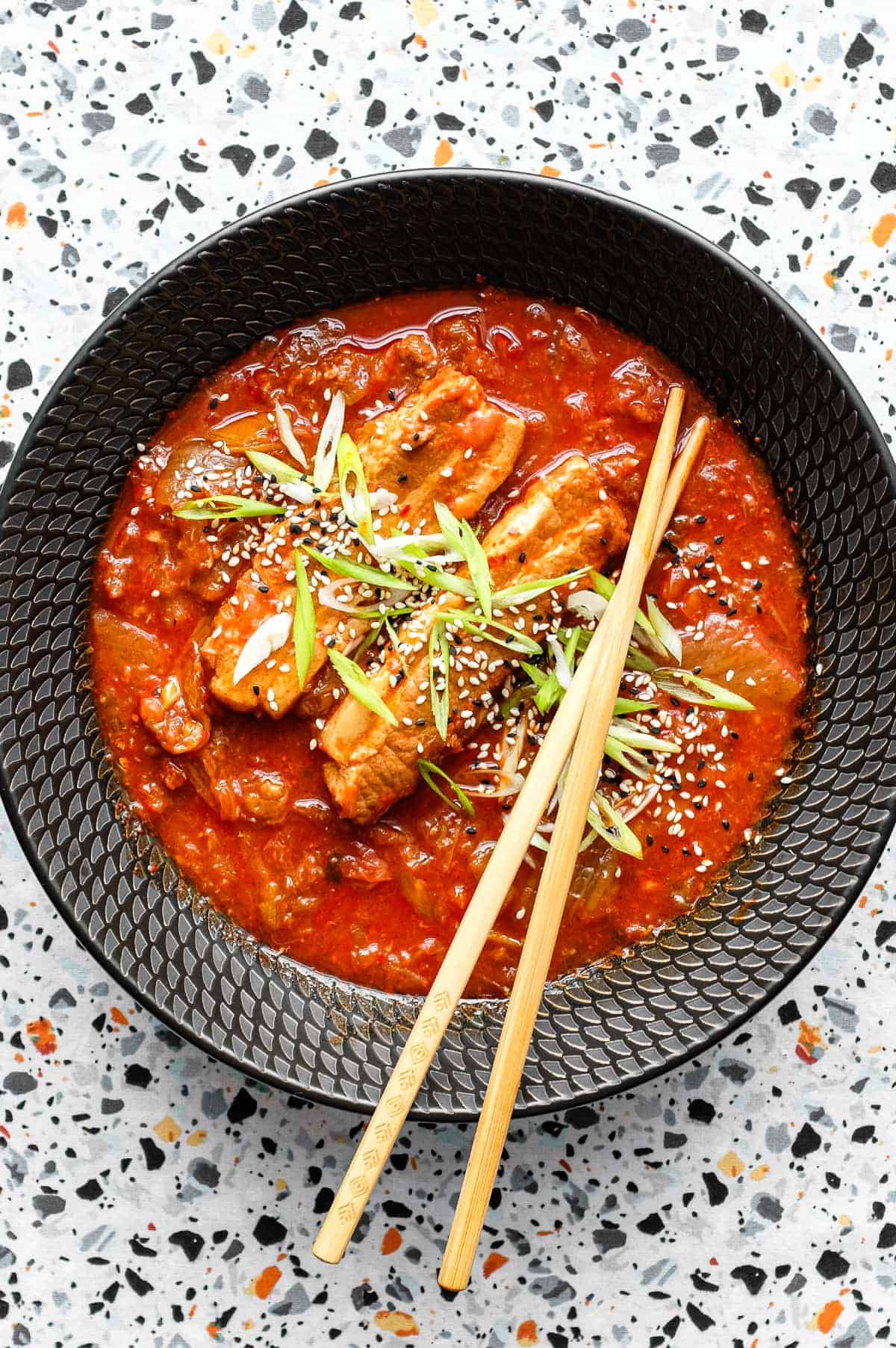
Having a ready made wallop of flavour at your disposal is a great way to build complexity without any effort. Korean kimchi is just that, a pre-prepared super-ingredient that will turn up the volume of flavour in anything it comes into contact with.
My super-easy Kimchi pork stew is a marriage of amazing flavour, colour and textures. A powerful punch of funky umami and undeniably Korean.
This pork belly 'Jorim', a stewing method from Korea, is a simple affair of braising the pork alongside cabbage kimchi, gochugaru (korean red pepper flakes), and beef stock until soft and tender. It's a spiced (not spicy) stew that has a deep, tangy and uniquely Korean flavour. I can't get enough!
Trust in the magic that kimchi can bring while showing that it's much more than just a condiment. It will transform this stew into something very special indeed.
What's Ahead?

What is Kimchi Samgyupsal Jjim? (김치삼겹살찜)
In short, this translates as Kimchi and Pork Belly Stew. This stew is somewhere between its more well-known cousins, kimchi-Jjigae (pork, kimchi and tofu) and kimchi jjim (braised kimchi). Samgyupsal refers to the pork belly part of the dish, kimchi jjim the braised kimchi.
It's a dish enjoyed across Korea and can be prepared by either stewing or steaming the main ingredients. There are countless regional variations of the recipe but all make great use of kimchi and pork belly as the stars of the show.
The dish gets its vibrant red colour from not only the kimchi, but from a generous helping of gochugaru (Korean chilli flakes) which have an intensely red hue, while being relatively mild in flavour.
Why it works?
- It's so satisfying - it's hard to pinpoint why this stew is so delicious - the kimchi brings an amazing depth of fermented flavour, quite unlike anything else. Think of it as the loud cousin of Germany's sauerkraut. It's comfort food that makes you feel good, while delivering a tonne of flavour.
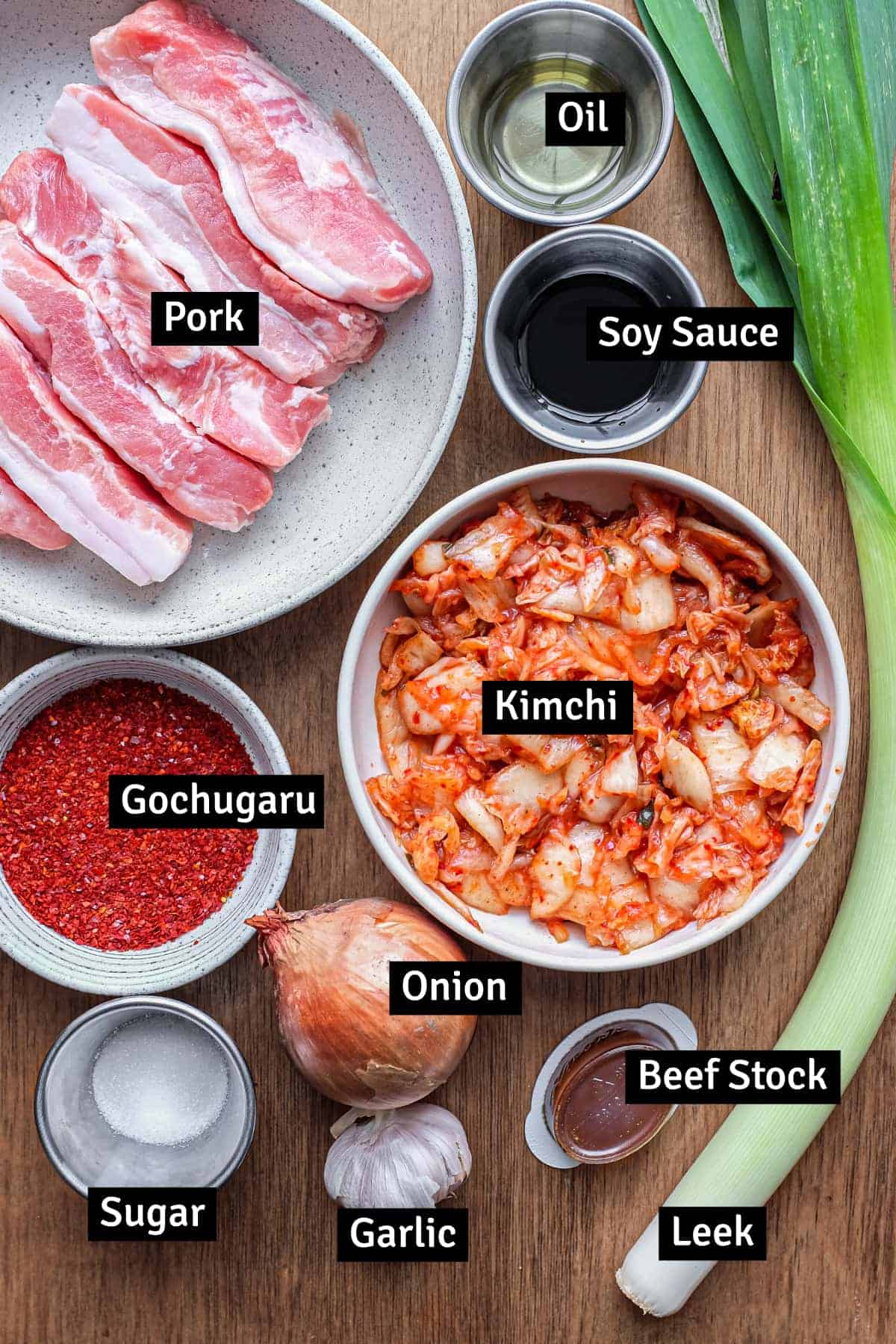
Stuff You'll Need
Making this pork stew at home is pretty simple, you only need a couple of specific ingredients and then the rest is very easy to find. Here are the key flavours:
- Pork belly - buy thick cut slices or a slab and slice it yourself.
- Kimchi (cabbage) - there are countless varieties, but the most common is cabbage kimchi, and this is what we use for this stew.
- Gochugaru - It's important to use the Korean gochugaru chilli flakes as they have a specific flavour and colour to bring to the stew. You can track them down at many Asian stores or online.
- Leek - traditionally Korean green onions/spring onions called 'Dee-Pa' are used - they're larger than regular spring onions and a little milder - a close substitute is leek.
- Onion and garlic - for more backbone to the sauce, we'll add onion and garlic.
- Beef stock - adds more depth of flavour, but you can also just use water.

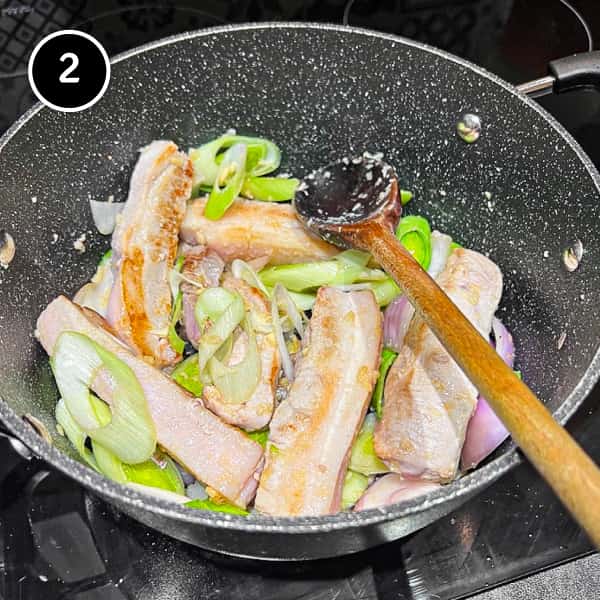

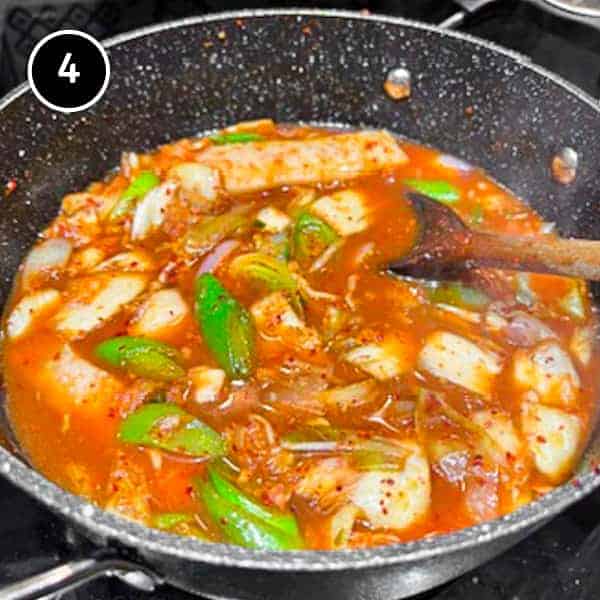

Step by Step
Making your Korean Kimchi pork stew couldn't be easier - most of the heavy lifting is done by the pre-made kimchi. Here's a summary of how to make it at home.
- Step 1 - Fry the pork belly in a little oil to sear on both sides.
- Step 2 - Add the onion, garlic and leek and saute for a few minutes.
- Step 3 - Add the kimchi, sugar, soy and gochugaru and stir until well combined.
- Step 4 - Add the beef stock or water and bring to a simmer.
- Step 5 - Reduce the heat and cook gently for 2 hours until the pork is tender.
That's it! You're ready to go.
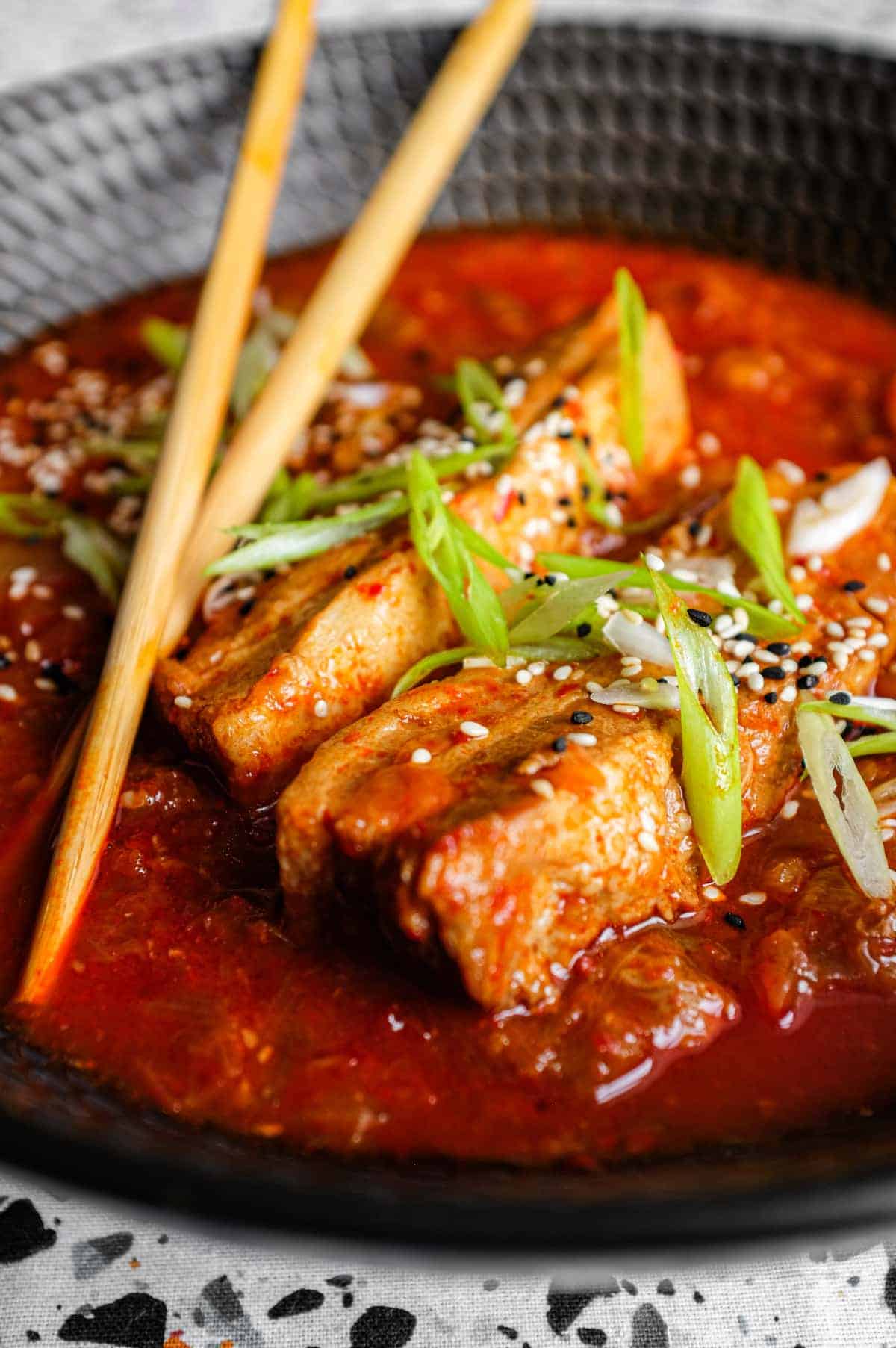
Serving & Storage Suggestions
- Serving - I like to serve my Korean pork stew with boiled rice or over udon noodles or soba noodles. There's a fair amount of sauce with my version, so to have something to soak up all that flavour my favourite way to eat is with rice.
- Fridge - This stew actually tastes better after a day or two, so if you have the patience, leave it in the fridge to see for yourself. It'll stay good for 5-6 days, in a sealed container.
- Freezer - portion into servings and keep frozen for 3+ months. Reheat until piping hot in a pan or microwave.
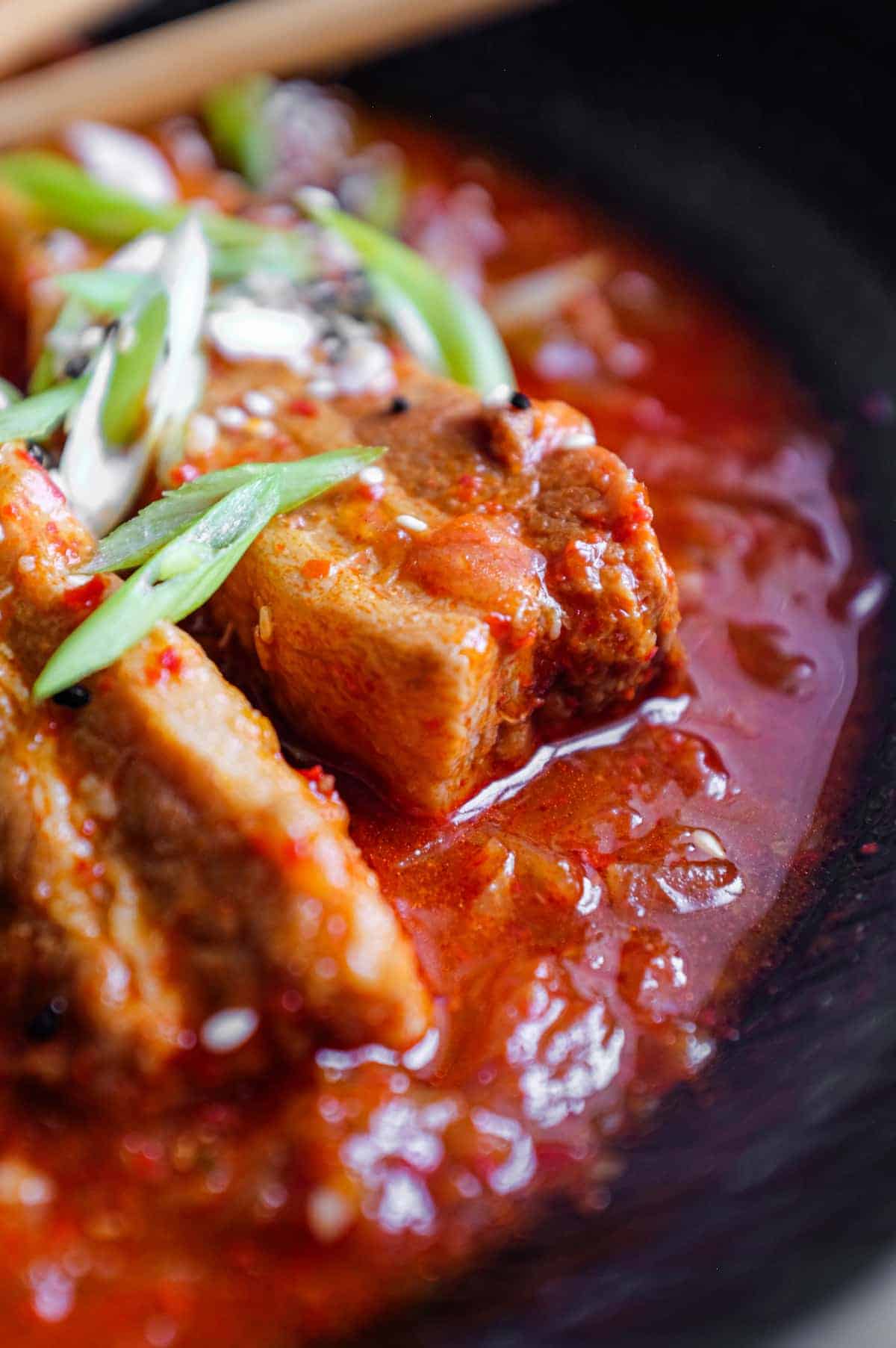
Ready to get cooking?
So, in short - this kimchi stew is one of my favourite and easiest Korean dishes to make at home. Kimchi brings all the magic to the dish with only a few easy steps to put the rest of the dish together. It's a great cold-weather meal but honestly, I'll eat it any time of the day/month/year. If you're a fan of the funky fermented kimchi, then this is a must-try! Hope you enjoy!

More Korean recipes
If you liked this recipe for Kimchi Pork Stew, I'm sure you'll love some more of my favourite Korean recipes.
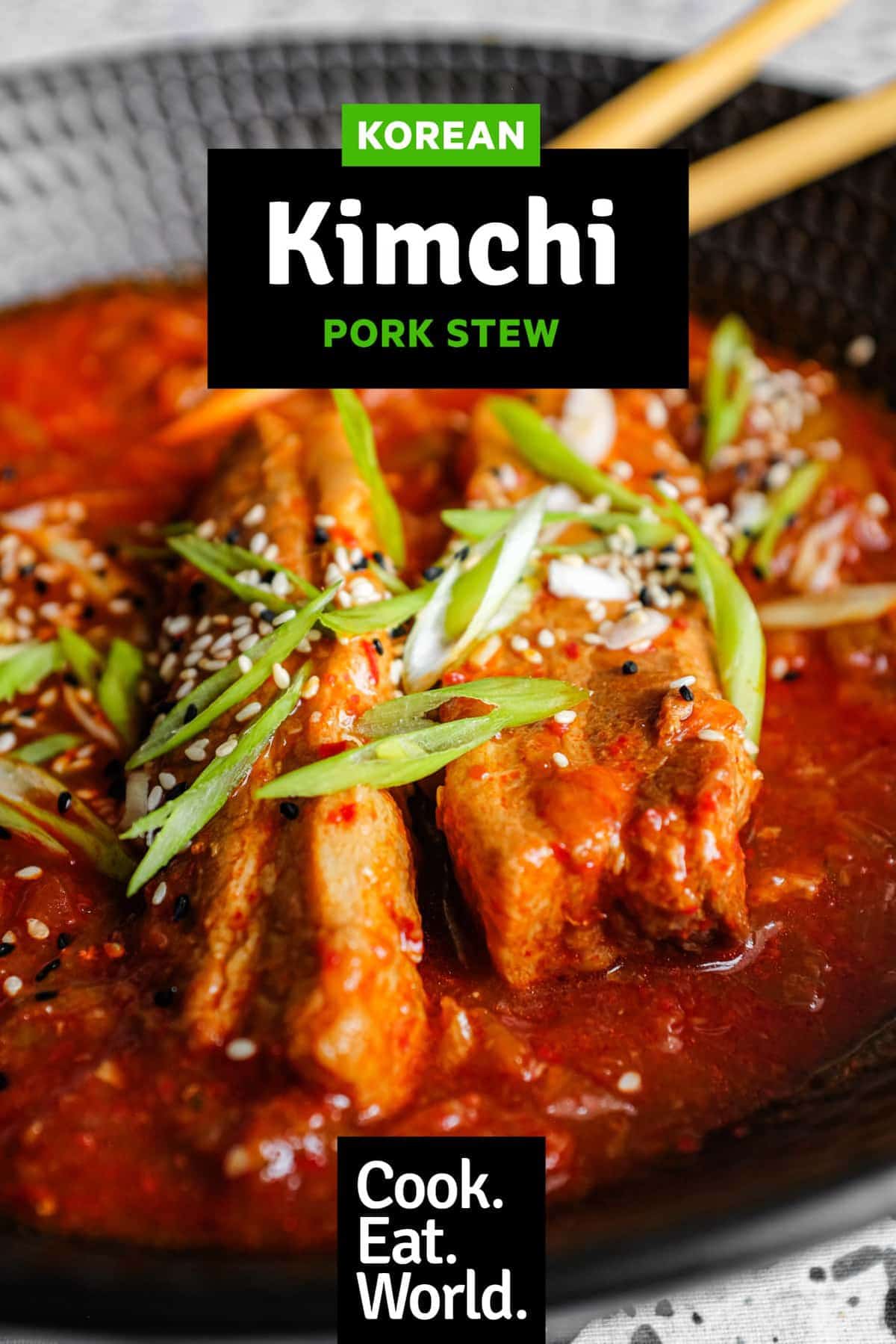
Any Questions? (FAQ)
Have a question about kimchi pork stew? Let me know in the comments.
Is kimchi healthy?
Yes, kimchi is considered a healthy food. It's a fermented dish made primarily from cabbage, radishes, and a mix of seasonings. The fermentation process can enhance its nutritional value by introducing beneficial probiotics, which support gut health. Kimchi is also rich in vitamins, such as vitamin A, vitamin C, and minerals like iron and selenium. Additionally, its low-calorie content and high fibre make it a good addition to a balanced diet.
Is kimchi spicy?
Yes, kimchi is often spicy. It's typically seasoned with ingredients like red chilli flakes or paste, which give it a spicy kick. However, the level of spiciness can vary depending on the recipe and personal preferences. Some variations of kimchi may be less spicy or even non-spicy, but the traditional versions tend to have a noticeable level of heat from the chilli seasoning.
This recipe uses affiliations and may receive a commission based on your activity (link clicks). Learn more.
Ingredients
- 1 tbsp vegetable oil
- 1.5 lb pork belly (about 700g) thick cut slices
- 1 leek (medium sized, cut into slices)
- 1 onion (small, chopped)
- 5 garlic cloves (minced)
- 10 oz kimchi (about 300g)
- 2 tbsp gochugaru chilli flakes (Korean chilli flakes)
- 1 tbsp light soy sauce
- 1 tsp sugar
- 3 cups beef stock (low sodium) (or water)
- 1 tsp sesame seeds (for garnish, optional)
- 1 tsp nigella seeds (for garnish, optional)
- 2 spring onions (thinly sliced for garnish, optional)
Instructions
- In a large pan over a moderate heat, heat the oil and then fry the pork belly for 2 minutes per side to brown. You may need to do this in batches.
- Return all the pork to the pan and add the leek, onion and garlic and fry for 3-4 minutes until softened.
- Add the kimchi, gochugaru, soy sauce and sugar and stir well.
- Pour in the beef stock (or water) and bring to a boil. Reduce the heat to low and gently simmer (partially covered) for 2 hours until the pork is tender. Remove from the heat.
- Serve with rice or noodles and garnish with sesame, nigella and fresh, sliced spring onions.
Notes
- Fridge: this pork stew will stay good in the fridge for up to a week. Store in an airtight container or bag.
- Freezer: This stew freezes excellently. Sotre in portions in freezer containers/bags for 3+ months. Cook from frozen in a microwave until piping hot, stir a few times during reheating to avoid microwave burning.
Nutrition



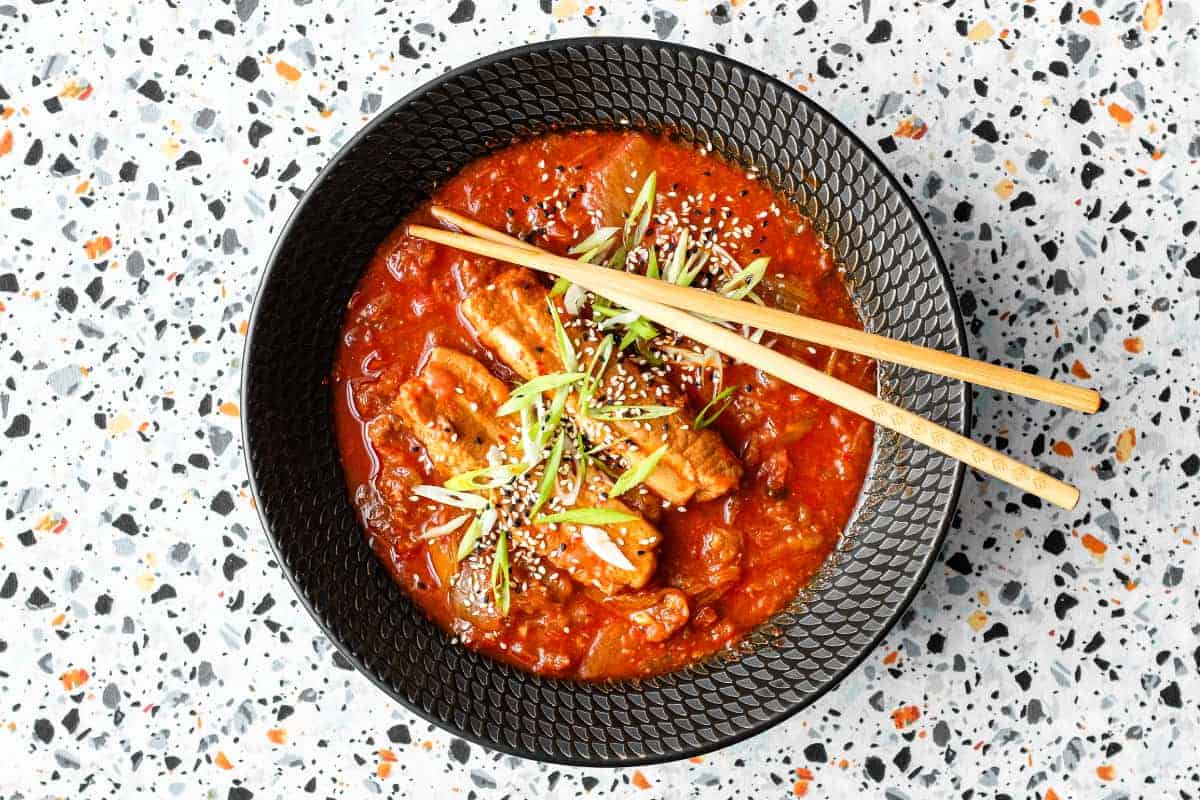
Leave A Comment